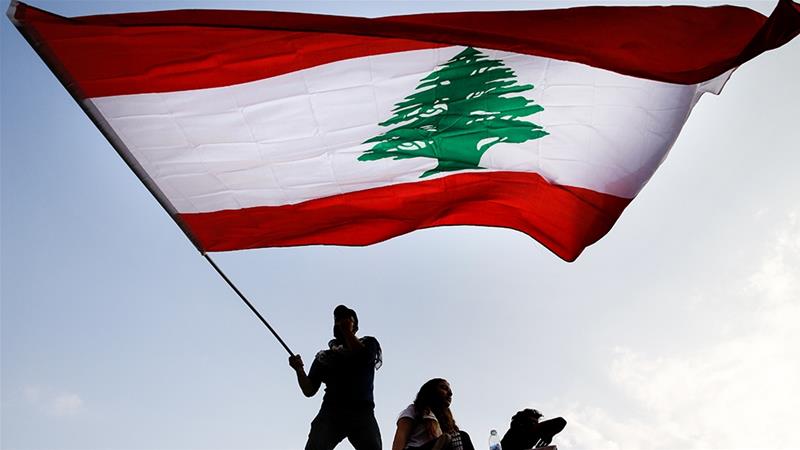The Exhausting Equilibrium: Lebanon Between “Calculated Tension” and “Controlled Escalation”

Lebanon today stands at a pivotal and exceptionally sensitive juncture-one whose implications extend far beyond the southern front and reach into the very core of its position within a rapidly shifting regional equation. All political and field indicators coming from Israel, as well as from concerned Western and Arab capitals, suggest that the likelihood of escalation is now higher than at any previous moment. The period following Israel’s recent military exercises appears to have been little more than a cover for serious preparations for a limited-or potentially large-scale-military operation against Hezbollah. Diplomatic channels feeding into Beirut indicate that Israel is not seeking a war of attrition but rather a calibrated operation with specific objectives: primarily to degrade Hezbollah’s military infrastructure in the South and the Bekaa, and to impose new facts on the ground that can later be leveraged for political ends.
Even the Israeli opposition-which has long attacked Benjamin Netanyahu on nearly every issue-no longer appears to oppose the escalation-oriented approach. A shared conviction now prevails within Israel’s political and military establishments: Hezbollah has become the weakest link in Iran’s axis, particularly after the erosion of the support network that once connected it to Syria and the Gaza Strip. Lebanon is therefore viewed today as the most the most viable arena for restoring deterrence and reaffirming Israel’s ability to impose its strategic will. This desire to restore the Israeli army’s prestige intersects with Netanyahu’s own political need for an external victory capable of re-unifying public opinion. Meanwhile, his rivals find themselves compelled to adopt a similar rhetoric, fearing that any appearance of conciliation would place them in a politically vulnerable position.
Conversely, Lebanon is experiencing an extremely fragile internal situation. The state-its institutions, presidency, and government-appears trapped between external pressures and internal divisions. The presidency and the government, particularly Prime Minister Nawaf Salam, are attempting to hold on to the option of indirect negotiations through international and Arab intermediaries, viewing negotiation as the only realistic alternative to war. Yet this option is burdened by structural incapacity: the state does not fully control decisions of war and peace, but rather shares this authority with an armed actor whose capabilities far exceed those of its own military institutions. Here lies the core dilemma: what meaning can negotiations “on behalf of the state” have when real military and political power on the ground rests in the hands of Hezbollah?
This contradiction renders Lebanon’s official discourse closer to crisis-management than to a genuine initiative. While the presidency calls for political and diplomatic dialogue to avert escalation, Hezbollah refuses to engage in any negotiating framework it perceives as an attempt to dismantle its arsenal or diminish its role within the security equation. The party describes any direct negotiation with Israel as a “trap,” yet simultaneously monopolizes the decision of confrontation and continues to impose its cadence on the Lebanese state. As a result, the boundary between the state and the party becomes a permanent political front line-turning Lebanon into a country with half a sovereign decision and an incomplete authority. Israel recognizes this vulnerability and actively seeks to exploit it.
In this context, Israel displays a level of clarity in its objectives that far surpasses Lebanon’s ambiguity. The proposals conveyed through diplomatic channels are not limited to the military dimension; they extend to a comprehensive re-engineering of the South-security-wise and economically. Tel Aviv is demanding a zone free of medium and heavy weapons south of the Awali River, the transformation of the border strip into a local, economically oriented civilian area administered nominally by Lebanese authorities but subject to practical security coordination with Israel, and the linkage of the maritime border and gas fields dossier to new security arrangements. This project appears to be part of a broader Israeli vision aimed at creating a new economic–security space along its northern frontier-one that would eventually integrate into the “Abraham Accords” framework and the regional energy cooperation architecture. In practice, such an arrangement would amount to a veiled form of normalization that Beirut officially rejects.
The United States, for its part, is pursuing a finely calibrated approach built on simultaneous containment and pressure. Washington does not want a full-scale war that could threaten regional stability or disrupt its strategic calculations in the Gulf and Iraq. Yet it also views the Israeli threat as an opportunity to reshape Lebanon’s internal balance of power without direct intervention. The U.S. administration has become convinced that Lebanese state institutions-foremost among them the army-are unable to assert full sovereignty as long as Hezbollah’s military arsenal remains intact. For this reason, it encourages Israel to keep the level of tension high, but within a controlled ceiling. This “calculated tension” provides Washington with political leverage over Beirut on one hand, and grants Tel Aviv a broader margin for maneuver on the other, all while ensuring that the escalation tempo remains under American supervision.
Amid this shifting landscape, Hezbollah is striving to adapt without losing its position or legitimacy. The party recognizes that the regional environment which enabled its expansion since 2011 has changed drastically: Syria is no longer the strategic depth it once was, and Iran is now engaged in a negotiation-driven struggle with Washington that compels it to reduce tensions across peripheral fronts. For this reason, Hezbollah is attempting to redefine its role within the Lebanese equation through the discourse of a “defensive strategy,” which it portrays as a framework for integration with the Lebanese Armed Forces. In practice, however, this framework serves as a mechanism for reproducing the duality of arms and authority. This proposal faces rejection from Prime Minister Nawaf Salam and several political forces, who view it as an attempt to legitimize the status quo rather than resolve it.
In parallel, regional actors such as Egypt and Qatar are moving along a separate track-most recently through the initiative led by Egyptian intelligence chief General Hassan Rashed, who visited Beirut. The proposal includes two parallel paths: the first aims to solidify a ceasefire and ensure Israel’s withdrawal from occupied points, in exchange for initiating a gradual disarmament process for Hezbollah accompanied by a financial and reconstruction aid package for the South. The initiative enjoys American backing, though there are no indications of any Gulf support at this stage.
However, Hezbollah approaches this initiative with considerable caution, fully aware that it touches the core of its military power. The party views it as an attempt to replicate the Gaza model-linking a ceasefire to reconstruction-in a manner designed to gradually diminish its influence under a humanitarian and political veneer.
On the Israeli side, security imperatives intersect with domestic political calculations. Netanyahu-grappling with a deepening internal crisis of confidence-sees escalation with Lebanon as an opportunity to re-unify the public and divert attention from his legal and political troubles. Meanwhile, the opposition under Yair Lapid has adopted a similar discourse calling for a “preemptive strike” against Hezbollah.
This rare convergence between the government and the opposition reflects a shared conviction that the current situation in Lebanon has become untenable, and that a military blow could open the door to new political and security arrangements in the region. Added to this is an undeclared layer of American support, driven by the Trump administration’s desire to grant its Israeli ally a wider margin of action within the emerging post-Gaza regional framework.
Given the rapid developments in the South and the accompanying political and diplomatic pressures, three main scenarios can be envisioned for Lebanon’s trajectory in the coming phase:
Scenario One: Sliding into a Full-Scale Confrontation
This possibility remains on the table should Israel proceed with its operational plans and decide to launch a large-scale offensive in the South-one that goes beyond the current limited strikes. Such a scenario would plunge Lebanon into a crisis far exceeding its capacity to manage, collapsing any potential negotiating track and dragging the Lebanese Armed Forces into a security equation over which they have no real control.
Scenario Two: Establishing a Temporary Truce Under International Sponsorship
French–American–Egyptian diplomatic efforts may succeed in extracting a ceasefire that reactivates indirect negotiation channels and potentially opens the door to discussions about a “gradual settlement.” This would involve security arrangements in the South, linked to a broader framework touching on Lebanese–Israeli relations and the limits of Iranian involvement. This scenario presumes Hezbollah’s willingness to enter a tactical understanding without relinquishing its weapons or its political standing.
Scenario Three: Sustaining the Suspended Status Quo
This is the most likely scenario in the short term. The confrontation would remain governed by the existing balance of deterrence, punctuated by intermittent escalations and mounting political and economic pressures inside Lebanon. Within this framework, the state would seek to buy time through diplomatic channels, while Hezbollah maintains its military posture within calibrated limits, awaiting the crystallization of the broader regional deal between Washington and Tehran.
Lebanon’s future remains more contingent on the intersection of regional and international trajectories than on its own domestic will. Caught between the possibilities of war, temporary settlements, and crisis management by pause, the country appears to be living in a state of “non-decision,” with little available except the attempt to minimize losses-until a larger understanding among the region’s influential powers finally takes shape.

